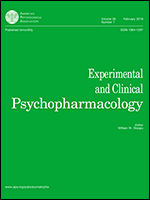
“Introduction/background and purpose: Studies with Cannabis Sativa plant extracts and endogenous agonists of cannabinoid receptors have demonstrated anti-inflammatory, bronchodilator, and antitussive properties in the airways of allergic and non-allergic animals. However, the potential therapeutic use of cannabis and cannabinoids for the treatment of respiratory diseases has not been widely investigated, in part because of local irritation of airways by needing to smoke the cannabis, poor bioavailability when administered orally due to the lipophilic nature of cannabinoids, and the psychoactive effects of Δ9-Tetrahydrocannabinol (Δ9-THC) found in cannabis. The primary purpose of this study was to investigate the anti-inflammatory effects of two of the non-psychotropic cannabinoids, cannabidiol (CBD) and cannabigerol (CBG) alone and in combination, in a model of pulmonary inflammation induced by bacterial lipopolysaccharide (LPS). The second purpose was to explore the effects of two different cannabinoid formulations administered orally (PO) and intraperitoneally (IP). Medium-chain triglyceride (MCT) oil was used as the sole solvent for one formulation, whereas the second formulation consisted of a Cremophor® EL (polyoxyl 35 castor oil, CrEL)-based micellar solution.
Results: Exposure of guinea pigs to LPS induced a 97 ± 7% and 98 ± 3% increase in neutrophils found in bronchoalveolar lavage fluid (BAL) at 4 h and 24 h, respectively. Administration of CBD and CBG formulated with MCT oil did not show any significant effects on the LPS-induced neutrophilia measured in the BAL fluid when compared with the vehicle-treated groups. Conversely, the administration of either cannabinoid formulated with CrEL induced a significant attenuation of the LPS induced recruitment of neutrophils into the lung following both intraperitoneal (IP) and oral (PO) administration routes, with a 55-65% and 50-55% decrease in neutrophil cell recruitment with the highest doses of CBD and CBG respectively. A combination of CBD and CBG (CBD:CBG = 1:1) formulated in CrEL and administered orally was also tested to determine possible interactions between the cannabinoids. However, a mixture of CBD and CBG did not show a significant change in LPS-induced neutrophilia. Surfactants, such as CrEL, improves the dissolution of lipophilic drugs in an aqueous medium by forming micelles and entrapping the drug molecules within them, consequently increasing the drug dissolution rate. Additionally, surfactants increase permeability and absorption by disrupting the structural organisation of the cellular lipid bilayer.
Conclusion: In conclusion, this study has provided evidence that CBD and CBG formulated appropriately exhibit anti-inflammatory activity. Our observations suggest that these non-psychoactive cannabinoids may have beneficial effects in treating diseases characterised by airway inflammation.”
https://pubmed.ncbi.nlm.nih.gov/34082108/
“The discovery of the endocannabinoid system (ECS) has enabled the growth of scientific evidence supporting the use of cannabis and cannabinoids as therapeutic agents for various diseases.
Various studies have suggested the use of cannabinoids as possible treatments for inflammatory diseases”
https://www.sciencedirect.com/science/article/abs/pii/S1094553921000596?via%3Dihub









